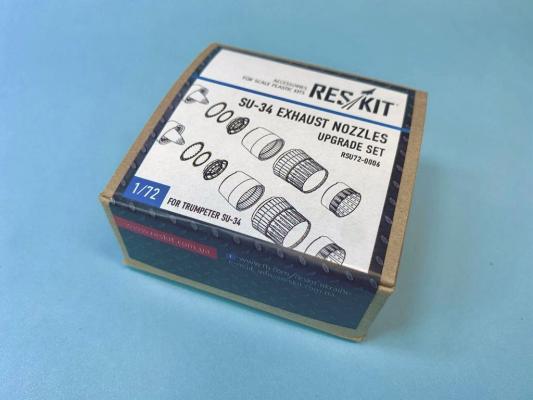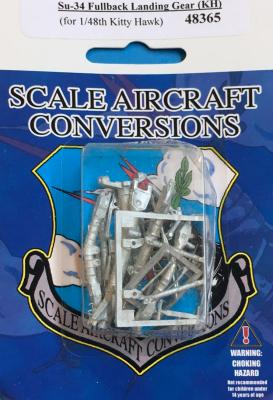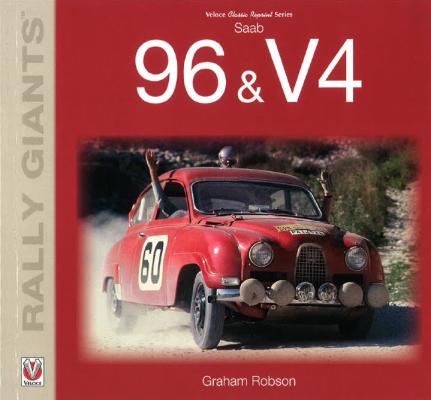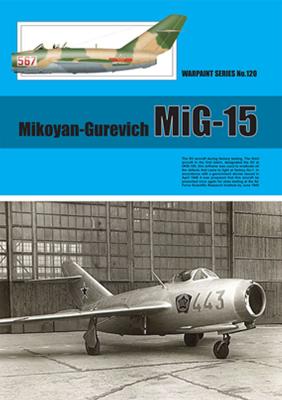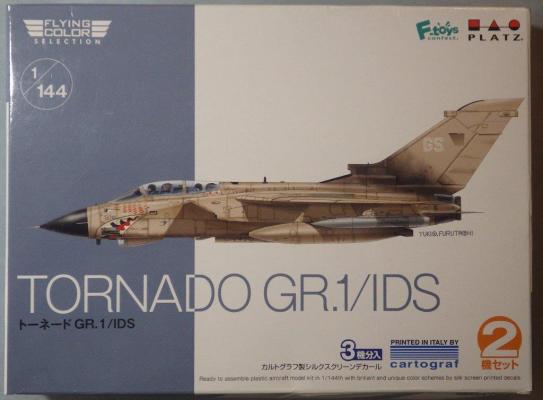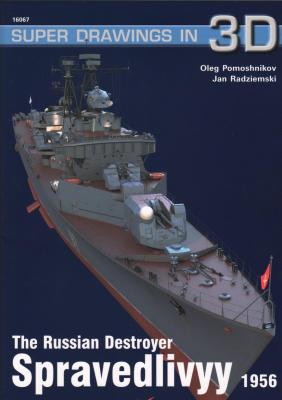Reskit is an aftermarket parts company based out of Kiev, Ukraine. Established in 2015, their products are a combination of photo-etch and resin parts. Using CAD and 3D printing technologies, the resulting product is finely detailed and builds up into very complex assemblies.
What's New
UPDATED REVIEW
This release by SAC provides replacement white metal landing gear for the Kitty Hawk 1/48 Su-34 kit. While white metal is softer than cast brass, the main struts and nose struts are quite sturdy in this set and will hold up if a lot of weight is added to the model. This release by SAC is a replacement for the kit landing gear, both the main gear and the nose gear. These parts are not a copy of the kit parts it is engineered from build-ups of the kit parts and then cast. As a result, this set has fewer parts than if you built the landing gear out of the box. The gear is engineered to incorporate some plastic parts from the Kitty Hawk kit. Unlike past SAC sets I have reviewed in the past, these parts have been cleaned up and do not show any mold lines.
This book provides great detail drawings of the American M36/M36B1 Tank Destroyer.
The US idea when going into WWII was to use tanks to support infantry and use Tank Destroyers against enemy tanks.
I found the photos and information in this book to be fascinating and many of the photos are ones not available anywhere else. The photos range from in production shots, in action and knocked out ones. All variations are covered in the photos and you see a lot of in action shots with the tank customized by each crew.
Along with the many photos from WWII there are great workarounds pictures full of fantastic details. These are indispensable for any modeler building this tank destroyer. You see so much detail in the walk around pictures which will make adding additional work to your model so much easier.
Each photo has a great description of what is in the picture, units using them, where and when.
This is a reprint of the original edition first published in 2010, and now is available in Veloce's Classic Reprint Series. The author's biography is available on the Veloce website above and is as follows:
This book illustrates how to liven pre-painted toy-like train kits by painting and adding weathering such as dust, dirt, grime, and other dirt effects. The book also shows how to create worn effects like rust, chipping, worn wood, spilled fuel, and burn damage. Various modeling techniques are illustrated with step-by-step photos of paints and other products to apply weathering and wear effects to train cars.
Example work of five different modelers are included:
- Ovidiu Cupse
- Graziano Ghetti
- Federico Emanuel Martinez
- Déak Róbert
- Mig Jiménez
The book has 14 chapters 8 to 14 pages long, each illustrating a different train car or diorama setting and how various weathering effects are achieved:
I have long been a fan of the Warpaint Series books from Guideline Publications and have several in my collection. They are excellent references for the aircraft they cover. Typically, they follow a standard format of history and development, service and deployment histories, and finally, technical information and detail photos. This particular volume, however, is slightly different from the others I’ve read since it is translated from Russian sources. Consequently, some of the sentence structure is stilted and you will have to take your time and read these passages carefully to absorb the content.
In the opening pages, the author discusses in detail why the designers chose the swept wing for the Mig-15 - speed. Then the narrative follows themes shown in the “sections” listed below.
Master Box Ltd, out of the Ukraine, has been a leader in 1/35 figures for a while. They expanded into 1/24 female and fantasy figures in 2016, starting with their first series of six female figures representing the World War II era. This current series, Truckers, is ideal for modern Class-8 truck vignettes and dioramas. Sandy and George “Skip” is the ninth release in this series with more on their way.
The Panavia Tornado is a family of twin-engine, variable-sweep wing multirole combat aircraft, jointly developed and manufactured by Italy, the United Kingdom, and West Germany.
There are three primary Tornado variants: the Tornado IDS fighter-bomber, the Tornado ECR (electronic combat/reconnaissance) and the Tornado ADV (air defense variant) interceptor aircraft. First flying in 1974, the aircraft was introduced into service in 1979–1980. Due to its multi-role design, it replaced several different fleets of aircraft in the adopting air forces of the three original partner nations. The Royal Saudi Air Force (RSAF) became the only export operator of the Tornado following a somewhat controversial trade deal.
Casemate Publishers, distributors for Kagero Publications, has added another title to their ongoing series of Super Drawings in 3D. This time they turn their attention to the Russian Destroyer Spravedlivvy. Built in 1956, the ship was part of a class of Soviet destroyers that are not well known in the west. By no means an iconic ship, given that Kagero is based in Poland, this ship was turned over to the Polish navy in 1970 where it took the name Warszawa (Warsaw). When it went into service with the Polish navy, the ship had been modified to carry missiles. The book looks at its original configuration, as the ship was commissioned, rather than in its modified form.
This is a pictorial book that uses photos to illustrate the history of the Fallschirmjäger during the pre-war and early war years. Each chapter includes brief text that chronicles the history of the Fallschirmjäger campaigns, but the story is mostly told in photos and their captions. Black & white photos illustrate the exploits of the paratroopers, and the publisher says many of the photos are rare or not previously published. The photos are low contrast and not too sharp, consistent with wartime photos. Illustrations are provided to illustrate events that don’t have photos.
German Fallschirmjäger (paratroopers) were considered elite troops and regularly engaged in front line combat during the Second World War. Their campaigns such as the fighting in Scandinavia, the taking of the Belgian fortress Eden-Emal in May 1940, and the Battle for Crete just a year later, proved them to be determined, courageous, and loyal soldiers.

